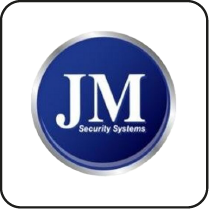Introduction to Risk Assessment in Information Security
A risk assessment is a systematic process to identify, evaluate, and mitigate potential threats.
Understanding the Role of Risk Assessment
Risk assessments are a critical tool within an organisation’s broader risk management framework. They are designed to preemptively address vulnerabilities and implement strategies that safeguard against information security breaches.
Objectives of Conducting a Risk Assessment
The primary objectives of a risk assessment include:
- Identifying Critical Assets: Pinpointing the data and systems essential to an organisation’s functions
- Evaluating Potential Risks: Assessing the likelihood and impact of various security threats
- Mitigating Identified Risks: Implementing controls to reduce the risk to an acceptable level
- Preventing Future Vulnerabilities: Establishing ongoing processes to adapt to evolving threats.
By systematically addressing these objectives, your organisation can enhance its security posture and ensure compliance with relevant standards and regulations.
Understanding the Risk Assessment Process
Key Steps in Risk Assessment
The process typically unfolds in four main stages:
- Identification of Risks: Organisations begin by pinpointing critical assets and sensitive data, alongside potential threats that could compromise these assets
- Risk Evaluation: Following identification, risks are assessed to determine their potential impact and likelihood. This evaluation guides the prioritisation of risks
- Risk Mitigation: Based on the assessment, a Risk Treatment Plan (RTP) is formulated, outlining specific controls and measures to mitigate identified risks
- Prevention and Review: The final step involves implementing prevention tools and processes, with continuous monitoring and periodic reviews to adapt to new threats.
Methodologies for Risk Evaluation
Organisations may employ quantitative methods, assigning numerical values to risks, or qualitative methods, ranking risks based on their severity. The choice of methodology influences how resources are allocated for risk mitigation.
Impact on Decision-Making
The outcomes of a risk assessment can significantly influence organisational decision-making, shaping security policies and strategies to protect against information security threats.
Navigating Compliance and Regulatory Frameworks in Risk Assessment
Compliance requirements such as the General Data Protection Regulation (GDPR), the Health Insurance Portability and Accountability Act (HIPAA), and ISO 27001 significantly shape risk assessment practices. These frameworks mandate organisations to adopt comprehensive measures for managing information security risks.
The Role of the Statement of Applicability
The Statement of Applicability (SoA) is key to demonstrating compliance with standards like ISO 27001. It is a detailed document that lists all the controls an organisation has implemented, providing evidence of commitment to information security.
Importance of Adhering to Regulatory Standards
Adherence to regulatory standards is a critical component of risk management. It ensures that organisations are not only protecting sensitive data but also operating within legal boundaries, thus avoiding potential fines and reputational damage.
Ensuring Compliance in Risk Assessment
To ensure risk assessment processes meet legal and regulatory obligations, organisations must stay informed about current regulations and integrate compliance checks into their risk assessment procedures. Regular audits and updates to the risk management plan are essential to maintain compliance.
Quantitative vs. Qualitative Risk Assessment Methods
Within the context of information security, risk assessment methods are bifurcated into quantitative and qualitative categories, each with distinct characteristics and applications.
Distinctions Between Quantitative and Qualitative Methods
Quantitative risk assessment involves numerical values to estimate risk levels, often using statistical methods to predict the frequency and impact of potential security incidents. In contrast, qualitative risk assessment employs a descriptive approach, categorising risks based on severity levels such as ‘low’, ‘medium’, or ‘high’.
Appropriate Applications for Each Method
- Quantitative Approach: Suitable for organisations with sufficient data to support statistical analysis, aiming for precise risk measurement
- Qualitative Approach: Preferred when numerical data is scarce or when a more subjective, consensus-driven assessment is required.
Impact on Resource Allocation
The chosen method directly influences how an organisation allocates resources for risk mitigation. Quantitative assessments can lead to a more targeted allocation based on calculated risk values, while qualitative assessments may result in broader, priority-based resource distribution.
Challenges and Benefits
Each method presents unique challenges; quantitative assessments require robust data collection and statistical expertise, whereas qualitative assessments may be prone to bias. However, both methods offer benefits: quantitative for its precision and qualitative for its adaptability to different organisational contexts.
Strategies for Identifying and Classifying Information Assets
The identification and classification of information assets are foundational steps in the risk assessment process. These steps ensure that the assets most important to your organisation’s operations and most vulnerable to threats are protected with appropriate security measures.
Identification of Information Assets
To begin, organisations catalogue their information assets, which may include data, hardware, software, and intellectual property. This inventory serves as the basis for further analysis and risk assessment.
Classification of Information Assets
Once identified, assets are classified based on their value, legal requirements, and sensitivity to confidentiality, integrity, and availability. Common classifications include ‘public’, ‘internal use only’, ‘confidential’, and ‘strictly confidential’.
Determining Asset Value and Sensitivity
The value and sensitivity of each asset are determined through criteria such as the potential impact on the organisation should the asset be compromised, legal or regulatory implications, and the asset’s importance to business operations.
Role in the Overall Risk Profile
Information assets play a pivotal role in shaping the organisation’s risk profile. The classification and valuation of assets directly influence the prioritisation of risks and the allocation of resources for risk mitigation strategies.
Systematic Identification of Threats and Vulnerabilities
Identifying potential threats and vulnerabilities is a critical step in the risk assessment process. Organisations must employ systematic methods to uncover any weaknesses that could be exploited by cyber threats.
Assessing Risk Levels
The risk level associated with specific threats and vulnerabilities is determined by factors such as the likelihood of a threat occurring and the potential impact on the organisation. This assessment considers both internal and external sources of risk.
Prioritising Risks
Organisations prioritise threats and vulnerabilities by assessing their severity and the potential damage they could cause. This prioritisation helps in allocating resources effectively to address the most significant risks first.
Prevention Measures
To prevent the exploitation of identified vulnerabilities, organisations implement a range of measures, including but not limited to, regular software updates, penetration testing, employee training, and adopting a zero-trust security model. These proactive steps are essential in maintaining a robust security posture.
Formulating Mitigation Strategies and Risk Treatment Plans
Effective risk mitigation strategies are essential for reducing the potential impact of identified security risks to an acceptable level.
Development and Implementation of Risk Treatment Plans
RTPs are developed to outline specific actions for addressing risks. These plans typically include:
- Selection of Mitigation Controls: Choosing appropriate controls to reduce risk, such as encryption, access controls, or security policies
- Allocation of Resources: Determining the resources required to implement these controls effectively
- Assignment of Responsibilities: Designating team members to oversee the implementation and maintenance of controls.
Role of Mitigating Controls
Mitigating controls are integral to the risk treatment process. They serve to either reduce the likelihood of a risk event or minimise its impact should it occur.
Monitoring and Adjusting Mitigation Strategies
Organisations must continuously monitor the effectiveness of their mitigation strategies and make adjustments as needed. This involves:
- Regular Reviews: Assessing the continued relevance and effectiveness of controls
- Adaptation to Changes: Updating strategies in response to new threats, vulnerabilities, or organisational changes
- Documentation: Keeping detailed records of risk assessments, treatment plans, and any changes made over time.
Emphasising Continuous Risk Management
Continuous risk management is a proactive approach to safeguarding information security. It is not a one-time event but an ongoing process that adapts to new threats and changes within the organisation.
Frequency of Risk Assessments
Regular risk assessments are mandatory. Organisations should conduct these assessments annually or bi-annually for critical assets, though some may require more frequent reviews depending on the volatility of the information security landscape and the organisation’s specific risk profile.
Tools and Processes for Ongoing Management
A variety of tools support continuous risk assessment and management, including:
- Automated Vulnerability Scanning: To identify and address vulnerabilities promptly
- Intrusion Detection Systems (IDS): For real-time monitoring of network traffic
- Security Information and Event Management (SIEM): To analyse security alerts generated by applications and network hardware.
Cultivating a Risk Management Culture
Organisations can develop a culture that prioritises continuous risk management by:
- Training and Awareness: Ensuring all members understand their role in information security
- Policy Development: Creating clear policies that outline risk management practices
- Leadership Involvement: Encouraging executives to champion risk management initiatives.
Implementing an Information Security Management System
An information security management system (ISMS) is a systematic approach to managing sensitive company information, ensuring it remains secure. It includes people, processes, and IT systems by applying a risk management process.
Key Components of an ISMS
An effective ISMS encompasses:
- Risk Assessment Procedures: To identify and assess information security risks
- Security Policies: That define management direction and support for information security
- Asset Management: To identify and classify information assets for protective measures
- Access Control: To manage authorisation and access to information
- Physical and Environmental Security: To protect the physical sites and equipment
- Operational Security: To manage operational procedures and responsibilities.
ISO 27001 and ISMS Implementation
ISO 27001 provides a framework for establishing, implementing, maintaining, and continually improving an ISMS. It specifies requirements for:
- Establishing an ISMS Policy: For setting objectives and guiding principles for action regarding risk management
- Risk Assessment and Treatment: For identifying and managing risks to information security
- Performance Evaluation: To monitor and measure ISMS performance against policies and standards.
Benefits of an ISMS
Implementing an ISMS can:
- Protect Data: From a wide range of threats to ensure business continuity
- Increase Resilience: To cyber attacks through regular reviews and updates
- Build Stakeholder Confidence: By safeguarding against data breaches and losses.
Systematic Management of Information Security Risks
An ISMS helps organisations:
- Align with Legal Requirements: Ensuring compliance with data protection laws
- Adopt a Proactive Approach: To identify and mitigate potential security risks before they arise
- Continuously Improve: Through regular ISMS audits and updates in line with evolving threats.
Advanced Techniques and Tools for Risk Assessment
In the pursuit of robust risk assessment, organisations have at their disposal a suite of advanced techniques and tools designed to enhance the precision and effectiveness of their security measures.
Leveraging Threat Modelling and Penetration Testing
Threat modelling and penetration testing are critical components in the identification and evaluation of security risks:
- Threat Modelling: This technique involves the systematic analysis of potential threats to an organisation’s information systems, helping to anticipate and mitigate security vulnerabilities before they can be exploited
- Penetration Testing: Penetration testing simulates cyber attacks on an organisation’s systems to identify and address security weaknesses. It is a proactive measure to strengthen the organisation’s defence against actual attacks.
The Role of Artificial Intelligence in Risk Assessment
Artificial intelligence (AI) and machine learning (ML) are increasingly integral to risk assessment, offering the ability to:
- Automate Detection: AI algorithms can rapidly analyse vast datasets to detect anomalies and potential threats, far surpassing human capabilities in speed and accuracy
- Predictive Analysis: ML models can predict future security incidents by learning from historical data, enabling organisations to preemptively fortify their defences.
Enhancing Risk Assessment Capabilities
Organisations can enhance their risk assessment capabilities by integrating these advanced tools into their security protocols, thereby:
- Improving Accuracy: Advanced tools can reduce the margin of error in risk assessments, leading to more accurate identification of potential threats
- Increasing Efficiency: Automation and predictive analytics streamline the risk assessment process, allowing for more frequent and thorough evaluations.
Addressing Challenges in Risk Assessment
Risk assessment is a critical but complex process, and organisations often encounter challenges that can impede their ability to effectively manage information security risks.
Common Challenges in Risk Assessment
Organisations may face difficulties such as:
- Data Overload: Sifting through vast amounts of data to identify genuine risks can be overwhelming
- Evolving Threats: The rapid development of new threats can outpace risk assessment efforts
- Resource Constraints: Limited resources can restrict the depth and frequency of risk assessments.
Overcoming Methodological Limitations
To address the limitations of quantitative and qualitative methods:
- Combining Approaches: Use both quantitative and qualitative assessments to balance precision with practicality
- Regular Training: Ensure that staff are well-versed in the latest risk assessment techniques and tools.
Ensuring Comprehensive Risk Identification and Evaluation
Strategies to ensure thorough risk identification and evaluation include:
- Continuous Monitoring: Implement systems for ongoing surveillance of the threat landscape
- Stakeholder Engagement: Involve various departments to gain a holistic view of potential risks.
Maintaining Accurate and Relevant Assessments
To preserve the accuracy and relevance of risk assessments over time:
- Periodic Reviews: Schedule regular updates to the risk assessment process to incorporate new information and address any changes in the organisation’s risk profile
- Feedback Mechanisms: Establish channels for receiving feedback on the risk assessment process and its outcomes, allowing for continuous improvement.
Key Takeaways in Risk Assessment for Information Security
Risk assessment is a cornerstone of information security, providing a structured approach to identifying and mitigating potential threats. It is essential for protecting organisational assets and ensuring compliance with various regulations.
Strengthening Security Posture
The strategies discussed, from asset identification to continuous risk management, contribute to a robust security posture by:
- Prioritising Risks: Ensuring that the most significant threats are addressed promptly and effectively
- Implementing Controls: Applying appropriate security measures to mitigate identified risks
- Adapting to Changes: Continuously updating risk assessment processes in response to evolving threats.
Anticipating Future Trends
Organisations should be aware of trends such as the increasing sophistication of cyber attacks and the growing emphasis on data privacy regulations. Staying informed about these trends is crucial for future-proofing risk assessment practices.
Evolving Risk Assessment Practices
To meet emerging threats and challenges, organisations must:
- Embrace Innovation: Incorporate new technologies and methodologies into their risk assessment processes
- Foster Agility: Develop the ability to quickly adapt to changes in the threat landscape
- Cultivate Expertise: Invest in training and development to enhance the skills of those responsible for risk assessment.

















